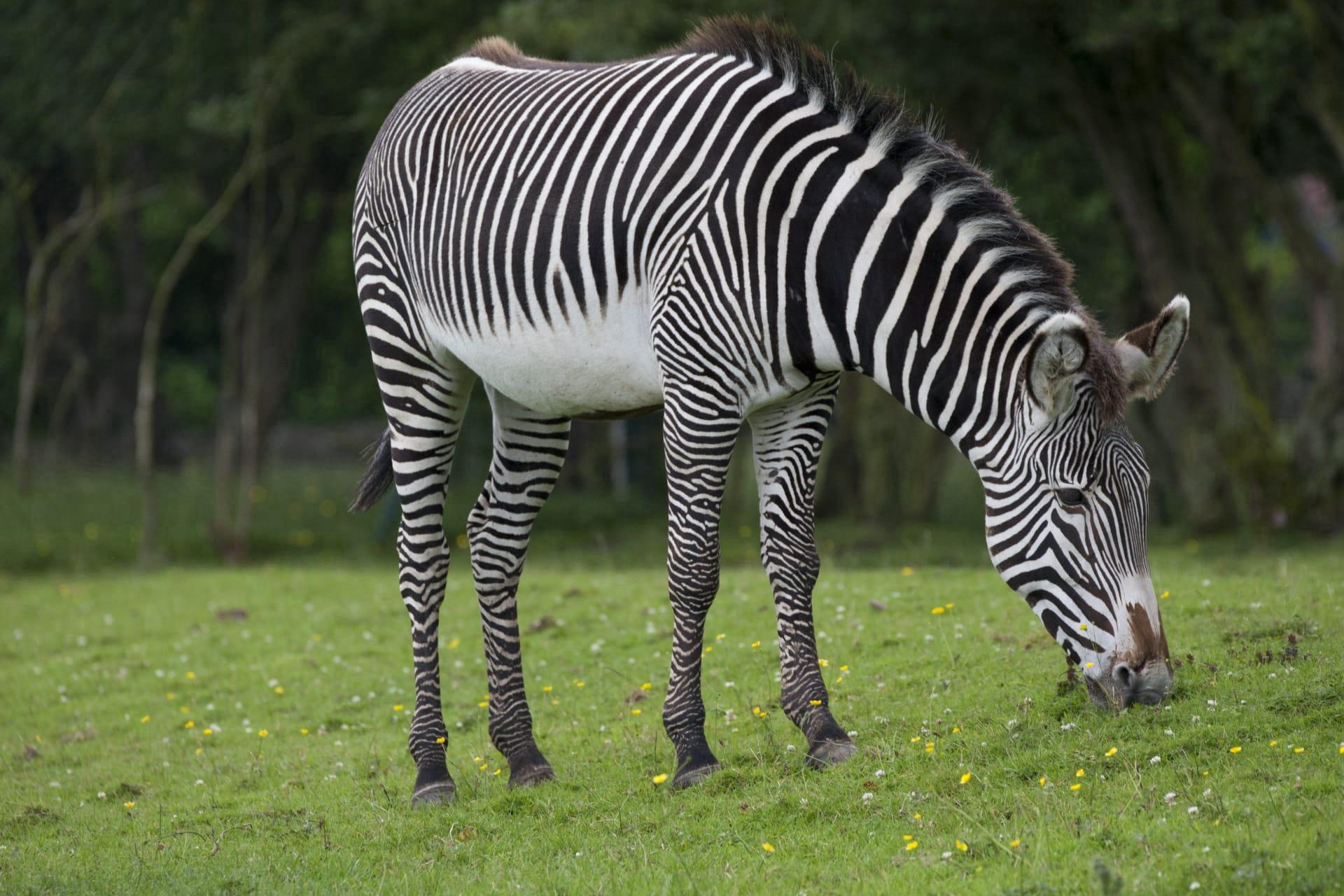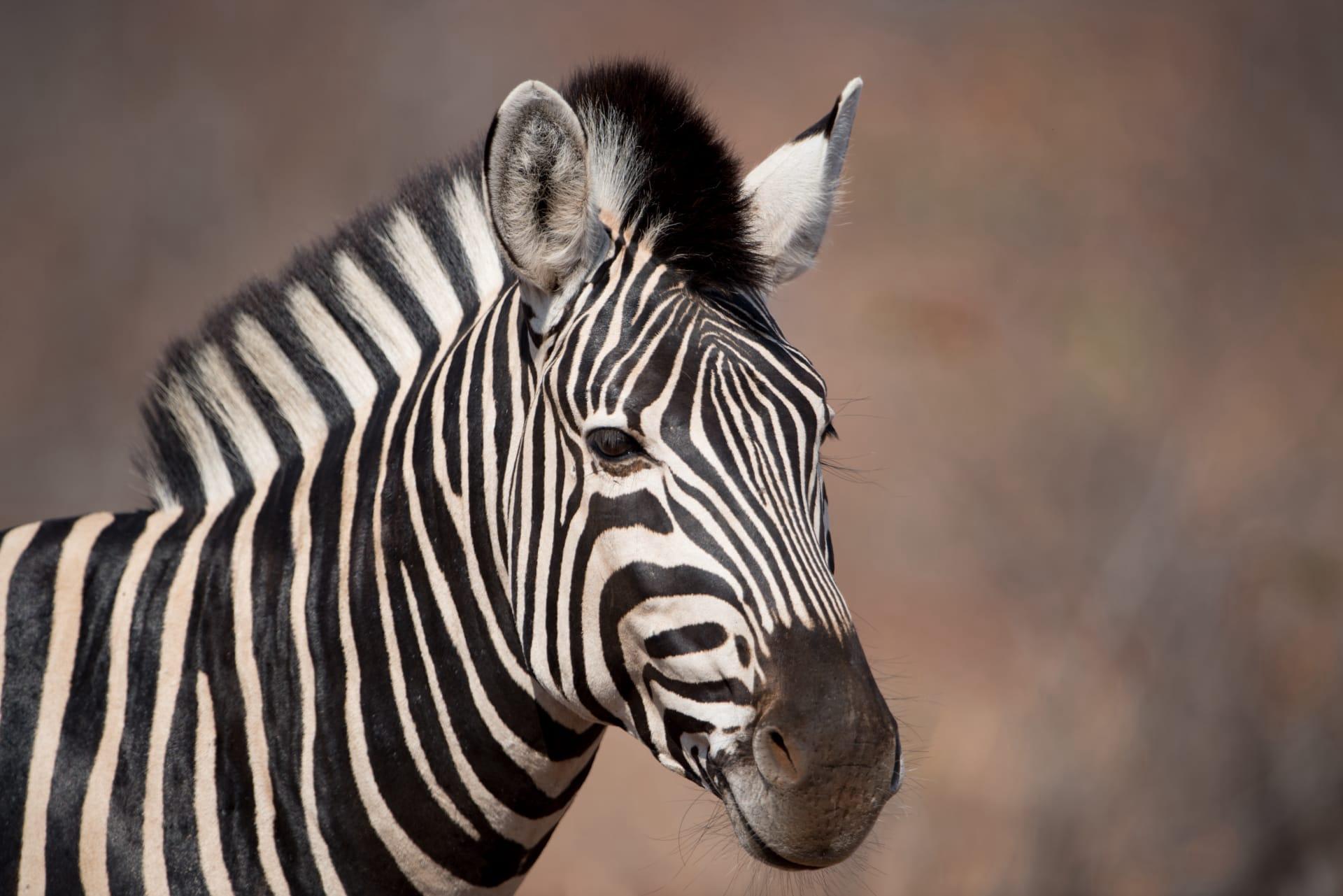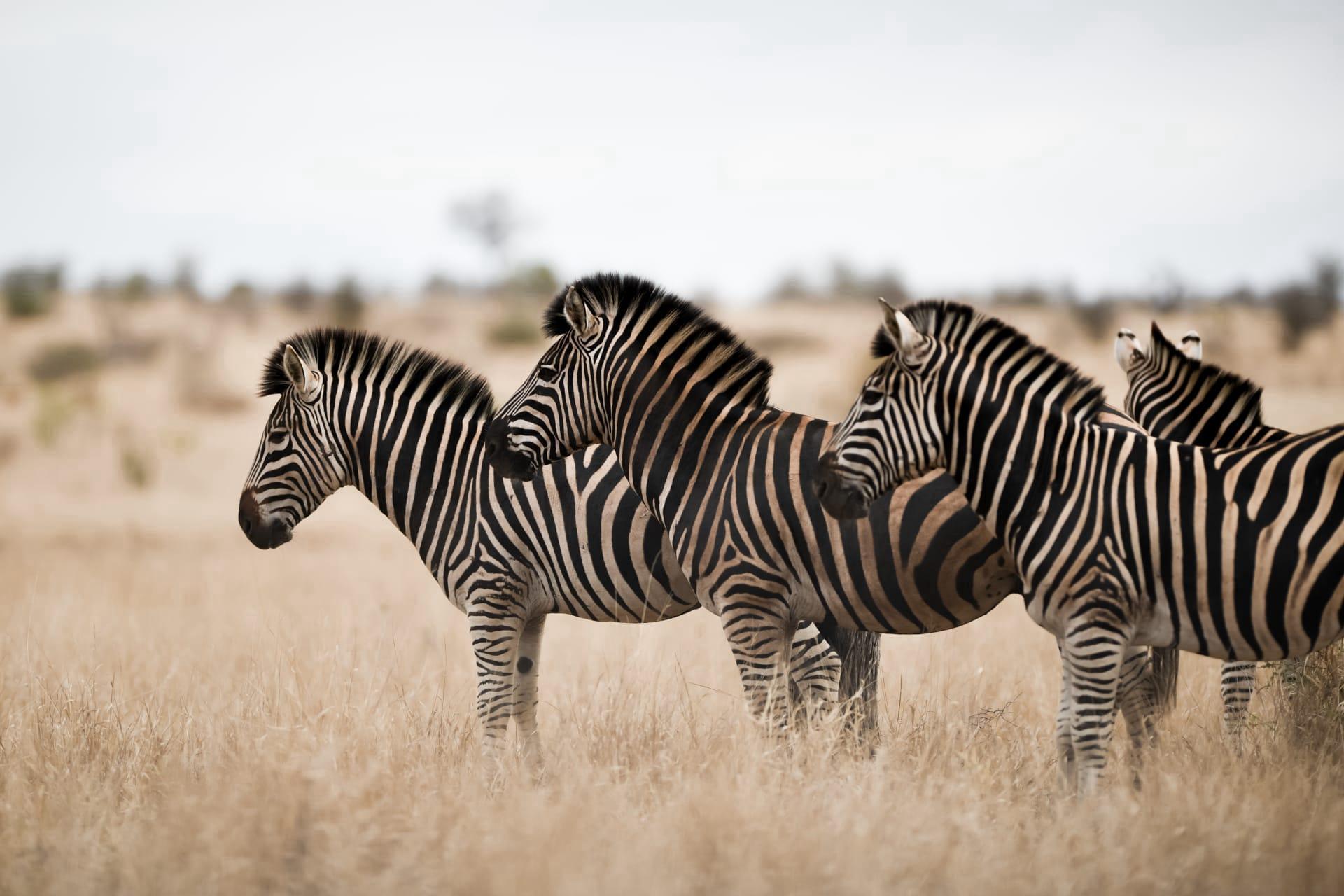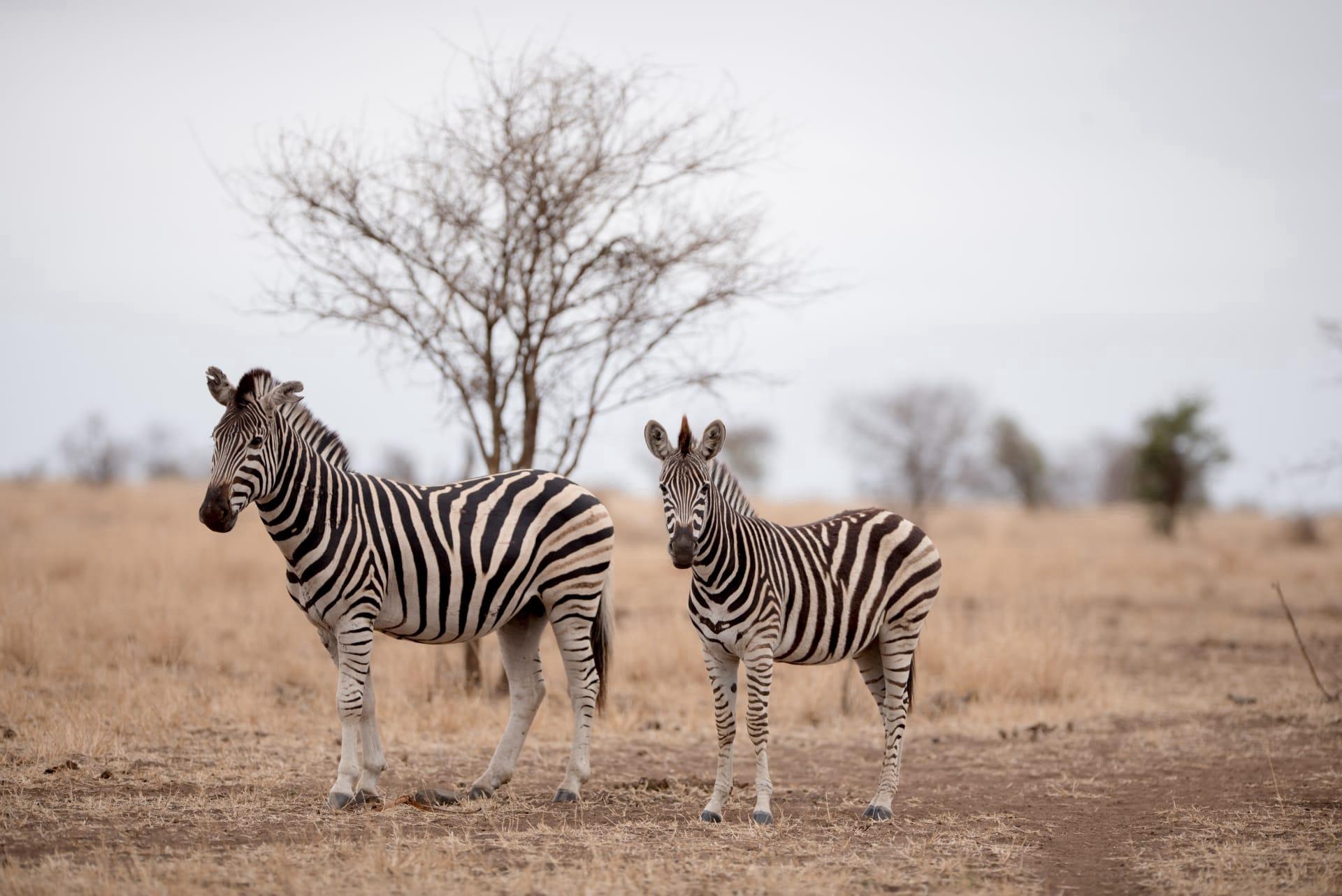1
Zebra stripes are unique as fingerprints. No two zebras have the same stripe pattern. This distinct pattern is crucial for their survival, as it helps them blend into their surroundings and confuses predators during a chase. Zebras mostly rely on their stripes for camouflage when they are in a group. The mass of stripes moving together makes it hard for predators like lions to pick out individual zebras.
Zebras can rotate their ears in almost any direction; this ability is not just for hearing. It also signals their mood to other zebras. For instance, when a zebra's ears are standing straight up, it's usually calm. If the ears are pushed forward, it's curious or friendly. However, flattened ears often indicate anger or aggression. This ear movement is part of their social communication, helping them convey feelings and intentions to their herd members.

2
Zebras have excellent eyesight. They can see in color, unlike many of their predators who see in black and white. This color vision helps them spot predators hiding in the grass and also helps them recognize different members of their herd. Their eyesight is particularly sharp at night, which is beneficial since they are prey animals.
Despite their horse-like appearance, zebras have a very different social structure. They live in small family groups called 'harems' consisting of one stallion and several mares with their young. This structure is different from many herd animals that have multiple males and females in a group. The stallion is fiercely protective of his harem and will fight off predators or rival stallions to keep them safe.

3
Zebras communicate with each other using various vocal sounds. One of the most distinctive sounds they make is a high-pitched barking noise, which is used to alert others of danger or to call the herd together. They also use snorts, huffs, and grunts in their daily interactions, each sound carrying a specific meaning or response.
Unlike horses, zebras cannot be domesticated due to their unpredictable and sometimes aggressive behavior. They have a strong survival instinct, which makes them react quickly and forcefully to perceived threats. This behavior, combined with their strong social bonds, makes them unsuitable for domestication like horses.

4
Zebras have a special digestive system that allows them to survive on diets of lower nutritional quality than that required by other herbivores. They can digest a wider variety of grasses, including some tough, fibrous ones that other animals avoid. This ability is vital in the harsh African savannas where they live, where food quality can vary greatly.
A zebra's kick can be powerful enough to break a lion's jaw. They have highly muscular hind legs and can deliver a forceful kick as a defense mechanism. This kick is strong enough to injure or even kill a predator, making it a crucial survival tool for zebras living in environments filled with threats like lions and hyenas.

5
Zebras play a significant role in their ecosystem by grazing. Their feeding pattern helps prevent overgrazing and allows a variety of other animals to coexist in the savanna. By eating older, tougher grasses, zebras help maintain the health and balance of the grasslands, supporting the ecosystem's diversity.
The gestation period for a zebra is about 12 to 14 months, which is longer than most other members of the horse family. The long gestation period results in a foal that is highly developed at birth, able to run within an hour of being born. This early mobility is crucial for their survival in the wild, as it helps them escape from predators.